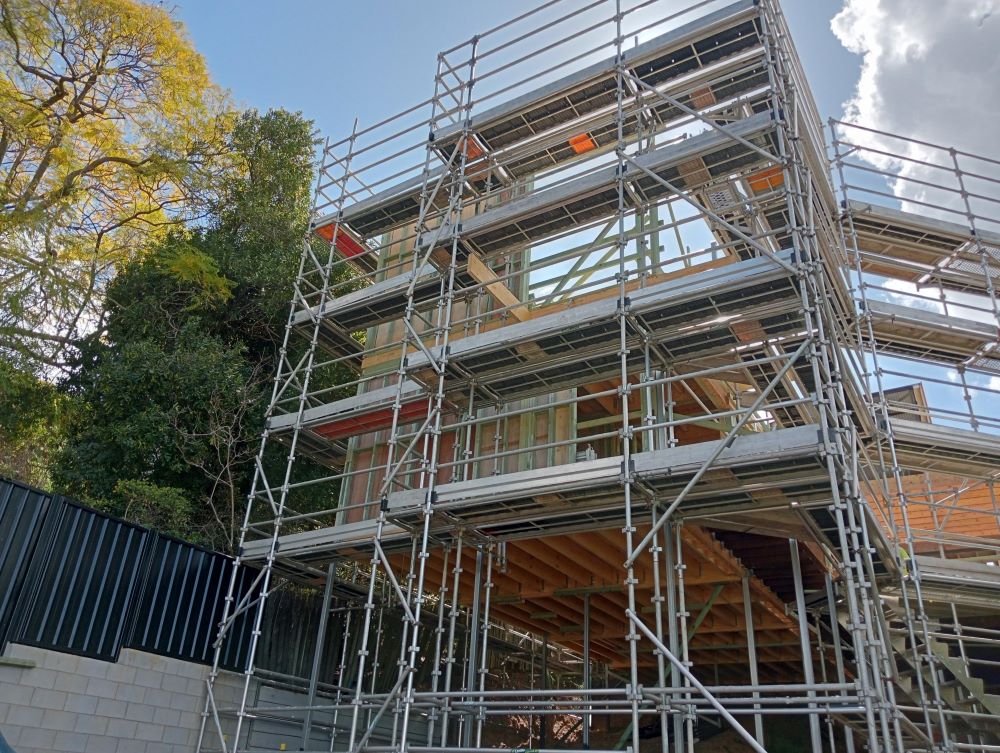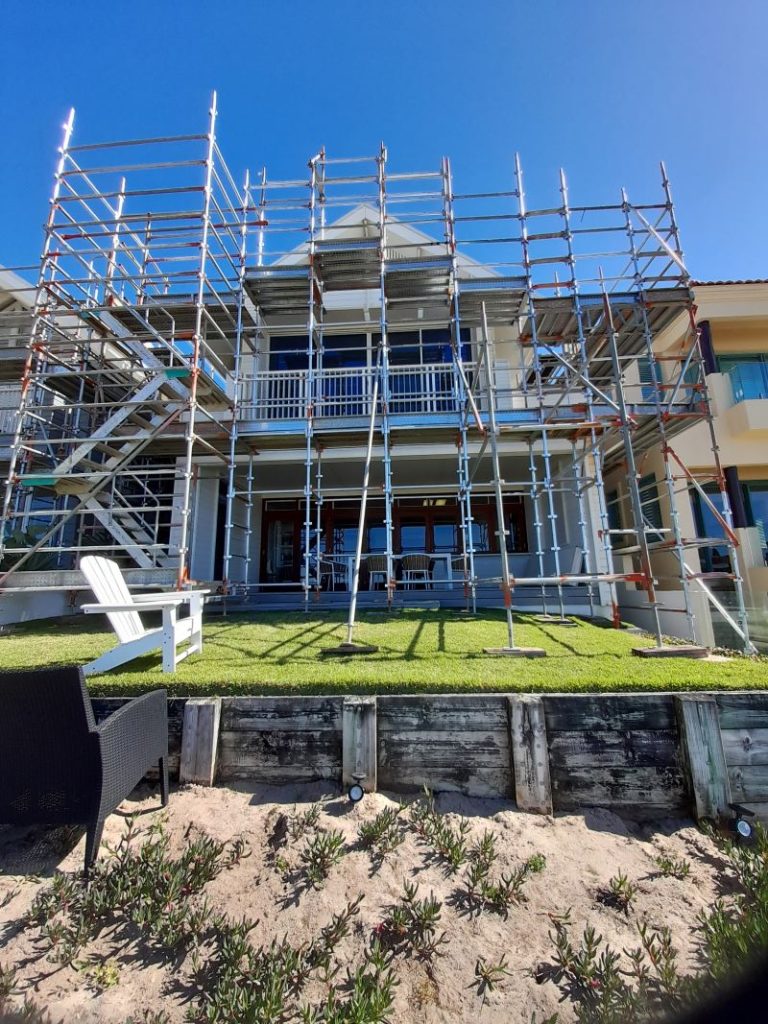Ultimate Comparison of Aluminium vs. Steel Scaffolding: Make the Right Choice for Your Construction Projects
Choosing the appropriate scaffold for your construction or renovation project is vital for ensuring both safety and operational efficiency. Among the most popular materials available are aluminium scaffolding and steel scaffolding. Each type offers unique characteristics, advantages, and suitable applications tailored to different project requirements. This comprehensive guide will delve into a detailed comparison of these two leading scaffolding materials, shedding light on their features, benefits, and best-use scenarios, to help you make an informed decision that ensures successful project execution and safety on-site.
When evaluating your scaffolding options, understanding the unique advantages and features of aluminium and steel scaffolding is essential. This guide will provide a thorough examination of these materials, empowering you with the information you need to make a knowledgeable choice that aligns with your project’s specific demands, ultimately ensuring the safety and efficiency of your construction operations.

Leverage the Advantages of Aluminium Scaffolding to Boost Construction Efficiency
Aluminium scaffolding is highly valued for its lightweight structure and remarkable ease of handling, making it an excellent choice for projects requiring frequent relocation and quick assembly. The components of aluminium scaffolding are significantly lighter than those crafted from steel, which facilitates smoother transportation and maneuverability at the work site. This feature is particularly beneficial for contractors operating in confined spaces or needing to reposition scaffolding materials frequently, thus ensuring a seamless workflow and enhanced operational efficiency throughout the project lifecycle.
Additionally, aluminium scaffolding is celebrated for its impressive corrosion resistance. This quality renders it perfect for outdoor projects or environments characterized by high humidity, ensuring that the scaffold retains its structural integrity and visual appeal over time. The corrosion-resistant attributes of aluminium scaffolding contribute to its long-term performance and reliability, which is especially critical for projects exposed to unfavorable weather conditions or moisture. This quality allows for safer operations and reduces maintenance needs significantly.
The setup and dismantling of aluminium scaffolding are typically quick and straightforward, as the components are designed for easy assembly. This efficiency can lead to considerable time savings on-site, particularly for projects with strict deadlines. By minimizing the time spent on setup and takedown, construction teams are empowered to focus more on completing their tasks effectively and safely, ultimately enhancing overall productivity and the success of the project.
Experience the Superior Strength and Stability of Steel Scaffolding for Heavy-Duty Projects
Steel scaffolding is renowned for its superior strength and substantial load-bearing capacity, making it a remarkably durable option for construction projects that necessitate robust support systems. This material is engineered to withstand significant weight and endure challenging conditions, providing a stable platform for workers even in demanding environments. Its rigidity and overall strength make it the preferred choice for projects involving heavy machinery or substantial materials, ensuring safety and reliability at elevated heights while minimizing the risk of accidents.
The durability of steel scaffolding is a critical advantage, particularly in extreme weather conditions or high-traffic areas where the scaffold may face heavy usage. Unlike lighter materials, steel scaffolding is designed to resist bending or deformation, ensuring a secure working environment for personnel. This reliability fosters confidence and a sense of safety among construction teams, allowing them to work effectively and with peace of mind, knowing they are well-supported throughout their tasks.
Moreover, steel scaffolding is recognized for its cost-effective longevity. Although the initial investment may be higher compared to aluminium, the durability and extended lifespan of steel scaffolding make it a financially sound choice over time. This material’s ability to endure repeated use leads to fewer replacements or maintenance needs, resulting in significant savings in the long run. This quality positions steel scaffolding as a strategic investment for any construction operation.
When deciding between aluminium and steel scaffolding, it is crucial to assess the unique requirements of your specific project. Factors such as material weight, scaffold height and dimensions, and the environmental conditions at the job site will greatly influence your final decision, ensuring that you select the most appropriate scaffold solution.
Consulting with your scaffold hire company can provide invaluable insights, helping you choose the most suitable option for your project’s specific demands. For additional information on when scaffolding is necessary and the types of projects that may require it, be sure to check out our article on when to hire scaffolding.
Key Considerations to Make When Selecting Scaffold Material for Your Construction Needs
Several vital factors must be evaluated when choosing between aluminium and steel scaffolding. A comprehensive understanding of each scaffold material’s strength and durability, weight and portability, and cost and affordability will empower you to make an informed decision that aligns with your project’s specific needs and constraints, ultimately ensuring that you select the most suitable solution for your construction requirements.
In-Depth Analysis of Strength and Durability: Aluminium vs. Steel Scaffolding
Both aluminium and steel scaffolds are recognized for their structural integrity and longevity; however, they display distinct qualities that may sway your decision. Steel scaffolding is generally regarded as possessing superior strength and load-bearing capacity compared to aluminium scaffolding. The robust composition of steel enables it to withstand heavy loads and maintain stability in challenging construction scenarios, making it a reliable option for demanding projects where safety is paramount.
Conversely, aluminium scaffolds are also strong and durable; however, they may not support exceptionally heavy loads as effectively as steel does. Therefore, it is imperative to thoroughly assess your project’s weight requirements to determine which scaffold material best meets your operational needs and safety standards, ensuring functionality and safety on the job site.
Weight and Portability: Evaluating the Handling Characteristics of Scaffolding Options
Aluminium scaffolds hold a significant advantage regarding weight and portability. Their lightweight nature allows for considerably easier handling and transportation compared to the heavier steel counterparts. This feature is especially beneficial in smaller-scale projects or situations where scaffolding needs frequent repositioning, as it minimizes physical strain on workers and enhances overall productivity on-site.
While steel scaffolds may be heavier, they still offer a degree of portability; however, they typically require more effort and manpower for transportation. Understanding the relevant weight and portability aspects of your project will help ensure efficient and safe scaffold use throughout your operations, leading to improved dynamics and productivity on the job site.
Explore the Distinct Advantages of Aluminium Scaffolding for Your Construction Projects
Upon evaluating various scaffold materials, aluminium scaffolding presents a multitude of unique advantages that make it a favored choice for numerous construction and renovation projects.
Experience the Lightweight Design of Aluminium Scaffolding for Effortless Handling and Enhanced Efficiency
A standout advantage of aluminium scaffolding is its lightweight design. Compared to steel scaffolding, aluminium is significantly lighter, enhancing its manageability and transportability. This characteristic not only accelerates the assembly and disassembly process but also contributes to a more streamlined workflow, ultimately shortening the overall project timeline. Furthermore, the ease of handling significantly boosts worker productivity, reduces the likelihood of fatigue-related accidents, and improves overall safety on-site, which is crucial for maintaining a secure working environment.
Exceptional Corrosion Resistance for Long-lasting Performance Across Diverse Environments
Aluminium scaffolding exhibits remarkable corrosion resistance, making it an excellent choice for a variety of environmental conditions. Unlike steel, which is susceptible to rust and deterioration, aluminium’s natural resistance to corrosion ensures that it maintains its structural integrity even when exposed to moisture or outdoor elements. This feature is particularly advantageous for projects conducted in damp or humid conditions, ensuring that the scaffold remains safe and effective throughout its use, thereby minimizing the risk of structural failures or safety hazards.
Speedy Assembly and Disassembly Processes to Enhance Project Efficiency
Another significant benefit of aluminium scaffolding is its quick assembly and disassembly capabilities. The lightweight components, user-friendly connectors, and efficient locking mechanisms streamline the setup process. This efficiency is especially valuable in time-sensitive projects or when scaffolding needs to be relocated frequently. The rapid assembly and disassembly associated with aluminium scaffolding save time and help reduce overall labour costs, providing an economic advantage for project managers looking to optimize their resources and improve overall project timelines.

Unlock the Unmatched Advantages of Steel Scaffolding for Heavy-Duty Construction Applications
Steel scaffolding offers a plethora of benefits that make it a top choice among contractors and builders when selecting the optimal scaffold for your construction project.
Discover Unrivaled Strength and Load Capacity with Steel Scaffolding Systems
One of the primary advantages of steel scaffolding is its unmatched strength and load capacity. Steel is well-known for its exceptional durability and ability to support substantial loads, making it ideal for projects where scaffolding must bear significant weights. Steel scaffold systems are meticulously designed to provide workers with a stable and secure platform, ensuring their safety while operating at elevated heights and in challenging environments. This design minimizes the risk of accidents and injuries, making it a reliable choice for demanding construction tasks.
Outstanding Durability in Harsh Environmental Conditions for Long-Term Use
Steel scaffolding is resilient against various environmental factors, making it suitable for harsh conditions. It can withstand adverse weather elements, including high winds, heavy rain, and extreme temperature variations. This durability ensures that the scaffold remains stable and secure, thus establishing a safe working environment for construction teams. Whether addressing projects such as gutter replacements or other tasks that necessitate scaffolding in demanding conditions, steel scaffolding is engineered to endure the rigours of the job, ensuring reliability and safety throughout the project.
Explore the Cost-Effective Longevity of Steel Scaffolding Solutions
Steel scaffolding is widely recognized for its exceptional longevity and overall cost-effectiveness. Its inherent durability ensures that the scaffold can withstand numerous construction projects over extended periods without significant degradation. Unlike other materials, steel scaffolding does not quickly wear out, reducing the need for frequent replacements or repairs. This long-lasting nature allows for substantial savings in the long run, making steel scaffolding a wise investment for any construction operation.
To determine the most suitable scaffold material for your specific project, it is essential to assess your needs carefully, consult with industry professionals, and consider safety standards and budgetary constraints. This thorough approach ensures you select the best option for your operational requirements and project success.
Essential Steps for Selecting the Perfect Scaffold for Your Construction Project
Choosing the right scaffold for your project necessitates a meticulous assessment of your unique requirements. By thoroughly evaluating your project needs, consulting with professionals, and considering safety and budget constraints, you can make a well-informed decision that aligns with your operational goals and enhances project efficiency.
Thoroughly Assess Your Project Requirements for Optimal Scaffold Selection
Begin by evaluating the specific details of your project and the tasks that necessitate scaffold support. Key considerations include the structure’s height and configuration, the anticipated duration of the project, and any specialized requirements that may arise based on the nature of the work to be performed.
For example, scaffolding for an apartment complex will have distinct specifications and requirements compared to scaffolding needed for gutter replacement. By thoroughly understanding your project needs, you can determine the appropriate type and configuration of scaffold that will best suit your operational objectives, ensuring on-site safety and efficiency while minimizing risks.
The Importance of Professional Consultation for Informed Scaffold Selection
Engaging with experts, such as Cando Scaffolding, is highly recommended when navigating the complexities of scaffold selection. Our extensive industry experience ensures you receive invaluable guidance, helping you meet safety standards and regulatory requirements throughout your project. By leveraging our knowledge, you can make informed decisions that enhance safety and efficiency on your job site.
Contact us today or request a quote to begin selecting the ideal scaffold for your project and ensure successful construction outcomes.
The post-Scaffold Choices: Aluminium vs Steel for Your Project appeared first on https://writebuff.com/.
The Article Aluminium vs. Steel: Choosing the Best Scaffold for Your Project Was Found On https://limitsofstrategy.com
The Article Aluminium vs. Steel: Best Scaffold Choices for Your Project First Appeared ON
: https://ad4sc.com



I really appreciate how you’ve broken down the differences between aluminium and steel scaffolding. I’ve always been a bit torn on which to use. In my last project, we opted for aluminium scaffolding because of its lightweight nature, which made it easier to assemble and move around, especially on a tight job site. But I’ve heard steel scaffolding provides more stability in heavy-duty applications. It’s fascinating how material choice can influence everything from safety to efficiency. Have you noticed any shifts in industry trends lately regarding the preference for one over the other? Would love to hear other readers’ experiences too!
It’s great to hear about your experience with aluminium scaffolding. The lightweight nature definitely gives it an edge for projects where mobility is key. I’ve often found that when you’re working on site, the ease of assembly can really make a difference in overall efficiency. I’m curious, did you notice any trade-offs in terms of stability when using aluminium compared to steel?
You bring up an interesting point about stability. In my experience, I’ve found that aluminium scaffolding can indeed feel a bit less stable compared to steel, especially on uneven ground or in windy conditions. However, I think the key is in the design and usage. Some of the newer aluminium models come with features that enhance stability, like wider bases or additional cross-bracing, which really makes a difference.
You raise a solid point about stability when it comes to aluminium scaffolding versus steel. Your experience with uneven ground and wind conditions really hits home because those can definitely play a big role in how secure a setup feels.
You’ve touched on a really important aspect that often gets overlooked. When working at heights, the last thing you want is to feel that unsettling sway from the wind or have stable footing compromised by uneven ground. I’ve had my fair share of experiences with both aluminium and steel scaffolding on various projects, and it’s interesting how each material really has its strengths depending on the situation.
It’s really interesting to hear about your experiences with aluminium scaffolding. I’ve noticed similar tensions between weight and stability in various contexts, whether it’s scaffolding or even mobile devices. It seems that advancements in design can often mitigate the drawbacks of materials that might not be as inherently stable.
You’ve touched on something essential about stability, especially in different environments. I can relate to your experience with aluminum scaffolding — it’s definitely a mixed bag. I’ve noticed that while aluminum is lighter and easier to move around, it doesn’t always inspire the same sense of security that steel offers, particularly in unpredictable weather or uneven terrain.
This comparison is super timely for me since I’m currently working on a renovation project and grappling with which scaffolding material to choose. I’ve seen both in action, but the differences in weight and ease of mobility always stand out for me—aluminium can be a game changer in terms of setting up quickly and efficiently, especially on more complex sites. I remember a job site where we used steel scaffolding; it was solid but felt cumbersome to maneuver around tight spaces.
It sounds like you’re really diving into the nitty-gritty of your renovation project. You’re right about the weight and ease of mobility being huge factors—especially when you’re in tight spaces. I’ve noticed that too; aluminum scaffolding can really help you zip around and adapt to the layout of a job site. It’s interesting how much being able to move quickly can affect the overall timeline and stress level of a project.
Your thorough examination of aluminium and steel scaffolding is not just timely but vital for anyone involved in construction or renovation projects. Understanding the core differences between these materials can be a game-changer for ensuring both safety and efficiency on site.